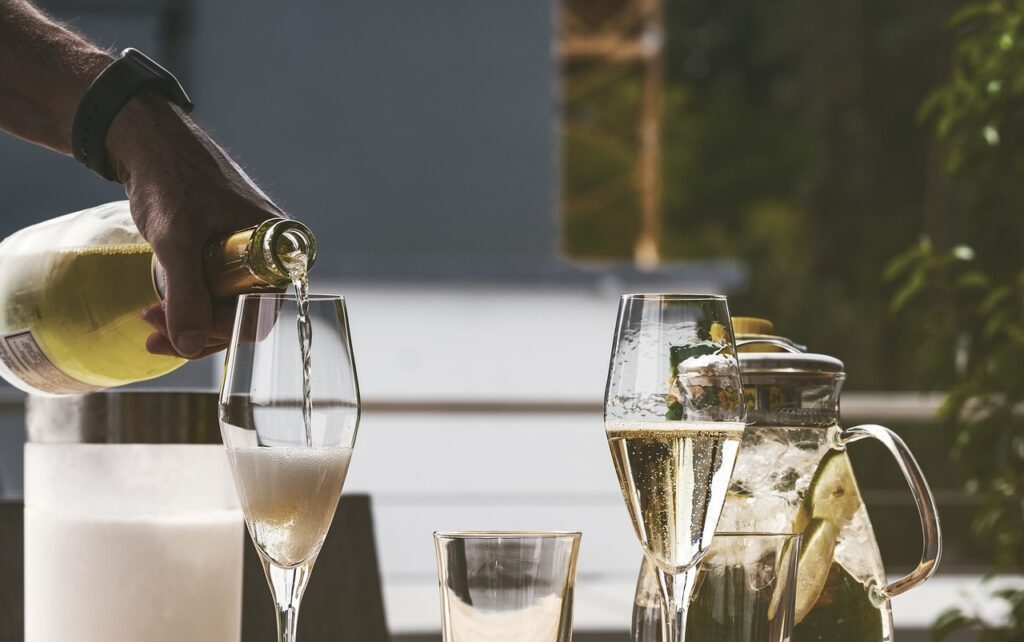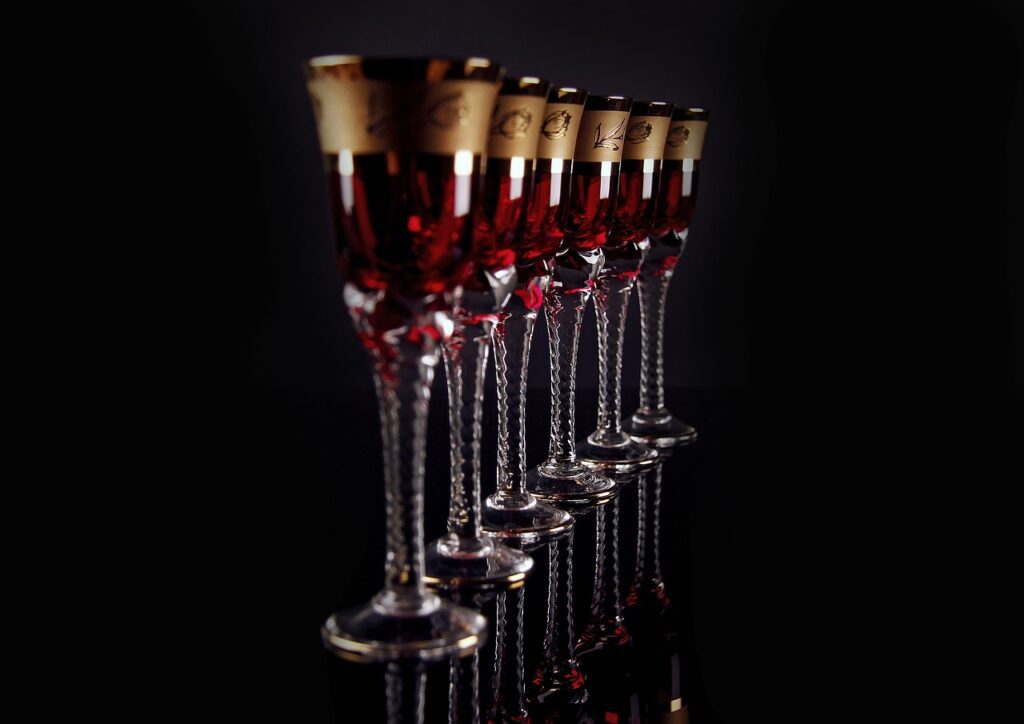One of the most significant factors influencing wine tasting is undoubtedly the temperature at which it is served. The ideal serving temperature not only preserves the wine’s integrity but also enhances the full range of aromas and flavors it can offer. Each wine, whether a robust red or a crisp white, has a specific temperature range that optimizes its sensory experience. When served at inappropriate temperatures, a wine’s characteristics can be compromised. For instance, red wine served too warm can overly emphasize the alcohol, while extremely chilled white or rosé can obscure the intricacies of its aromas, leading to an unsatisfactory tasting experience.
Another common misconception is serving wine at “room temperature.” However, the definition of room temperature varies significantly by region. In places experiencing extreme temperatures, such as 40°C or -20°C, the inadequacy of ambient temperature becomes apparent. These temperature extremes disrupt the balance essential for an optimal tasting experience. Fluctuations in temperature, whether severe heat or cold, directly impact the sensory qualities of wines and the responsiveness of our taste buds. At temperatures below 10°C, taste bud sensitivity diminishes, and at sub-4°C, this sensitivity can nearly vanish, affecting our flavor perception. This is particularly crucial when tasting wines, as each variety’s unique characteristics can be nearly imperceptible if temperature is disregarded.
Moreover, wine temperature also influences our perception of alcohol content. When served above 20°C, the alcohol evaporates more readily, resulting in a stronger presence on the palate. Similarly, while sweetness is accentuated at warmer temperatures, it diminishes dramatically when the wine is served too cold. Aromas are more readily expressed at higher temperatures, whereas extremely cold drinks can render aromas flat and uninviting. Tannins, found in red wines and responsible for astringency, are similarly affected; colder servings can intensify their potency, leading to an unpleasant and imbalanced tasting experience.
In this article, we will delve into the ideal serving temperatures for various wines, exploring the subtle nuances that enhance the appreciation of this rich and complex beverage. From robust reds to fragrant whites, each wine type has its unique characteristics that can be accentuated or dulled based on how they are served. By understanding and applying the correct serving temperatures, you can fully enjoy your wines to their fullest potential.
Wine is the most healthful and most hygienic of beverages
― Louis Pasteur
Jump To Section
Red Wine
You can also watch this and other exclusive GA Originals on YouTube.
Red wine should be served slightly chilled, ideally between 16˚C and 18˚C, which is just below room temperature. This temperature range is crucial for allowing the wine’s flavors and aromas to unfold harmoniously on the palate.
Serving red wine too cold can accentuate the tannins, resulting in a harsh and astringent taste that detracts from the wine’s smoothness and complexity. This ultimately diminishes the overall sensory experience. Therefore, paying attention to the serving temperature is essential for fully appreciating fine red wine, enabling its unique characteristics to shine and be thoroughly enjoyed.
White Wine

White wines, unlike red wines, are best served at significantly lower temperatures, typically between 7˚C and 12˚C. This cooler range is crucial for highlighting the distinct qualities of white wines, celebrated for their freshness, lightness, and delicate aromas. When served at these optimal temperatures, white wines retain their vibrant acidity and allow their fruity and floral notes to emerge more clearly and delightfully.
Moreover, the tasting experience is greatly enhanced, as the refreshing nature of white wines makes them perfect for relaxed occasions, complementing light dishes like salads, seafood, and appetizers. Consequently, serving white wines at the correct temperature not only honors their inherent characteristics but also elevates the overall sensory experience, enriching any gathering.
Rosé Wine

Rosé wines are celebrated for their lightness and refreshing qualities, making them delightful choices, especially on warm days. What distinguishes many rosés is their often greater structure compared to some white wines. This added dimension allows for a more nuanced tasting experience, enabling rosés to complement a broader range of dishes and occasions.
The optimal serving temperature for rosé ranges from 6˚C to 13˚C, further enhancing their appeal. When enjoyed at this ideal temperature, rosé wines reveal their full aromatic and flavor potential, highlighting their fruity and floral notes for a truly refreshing experience. Thus, rosé wines excel not only in versatility but also in their capacity to create enjoyable moments, whether at an alfresco picnic, a gathering with friends, or during celebratory events.
Sparkling Wine

To fully appreciate the unique characteristics of sparkling wines, they should be served at a temperature between 3˚C and 7˚C. This range is optimal for preserving the vibrant bubbles that define these drinks. Serving sparkling wines at higher temperatures can hinder the effective dissolution of carbon dioxide, leading to a rapid escape of bubbles.
Consequently, this results in a diminished intensity and volume of effervescence, detracting from the sensory experience that makes these wines remarkable. Thus, attention to serving temperature is crucial for savoring the freshness, elegance, and complexity inherent in sparkling wines.
Dessert And Fortified Wine

Dessert wines represent a unique category that spans a wide range of styles, and this variety plays a crucial role in determining the optimal serving temperature. For instance, late-harvest wines like Ice Wine, Tokaji, and Sauternes are crafted from grapes left on the vine longer, allowing them to develop heightened sweetness and flavor concentration.
These wines are best enjoyed at cooler temperatures, typically between 3˚C and 7˚C, as this chill enhances their freshness and acidity, effectively balancing the sweetness for a delightful and refreshing palate experience. Conversely, fortified wines such as Port and Sherry are produced by adding a distillate, usually brandy, during fermentation, resulting in higher alcohol levels and richer, more complex flavors.
These wines thrive at slightly warmer temperatures, generally between 14ºC and 18ºC, which helps to accentuate their intense aromatic profiles, enriching the tasting experience. Ultimately, selecting the right temperature for dessert wines not only emphasizes their distinctive qualities but also elevates the appreciation of their flavors and aromas, turning each sip into a memorable journey.
Bottom Line
It’s important to remember that wine is a living entity, a beverage that continues to evolve and gain complexity even after being bottled. This remarkable trait, however, also makes wine fragile and vulnerable to various factors that can compromise its quality over time. One of the primary culprits of wine deterioration is improper storage. Conditions such as excessive heat and direct sunlight can trigger undesirable chemical reactions, resulting in oxidation. This oxidation can dramatically affect the wine’s flavor, aroma, and even color, leading to a tasting experience that falls short of expectations.
To prevent such degradation, investing in a climate-controlled wine cellar is a smart solution for your wine collection. These cellars act as specialized mini-refrigerators for wine, creating a controlled environment that preserves the essential qualities of this beloved beverage. Many models can simultaneously accommodate both red and white wines, offering remarkable versatility. You can easily adjust the temperature in each compartment to suit the unique requirements of different wines, ensuring your bottles are not only safeguarded but also ready to be enjoyed at the ideal serving temperature.
Beyond protecting wine from unfavorable conditions, climate-controlled cellars promote proper aging, keeping it in prime condition until you are ready to savor it. As a result, wine enthusiasts can indulge in a richer and more satisfying tasting experience, fully appreciating the intricate aromas and flavors. Thus, when contemplating your wine collection, investing in a climate-controlled wine cellar is a choice that significantly enhances your overall enjoyment of wine.
Did you like this article?
I hope this article has helped you improve your skills. To learn more, take a look at Sauvignon Blanc: The Enthusiast’s Guide To Wine Lovers.
Leave a comment below and share our content. Help our community grow by following our social media on Spotify, Instagram, Facebook, YouTube, and TikTok. And stay up to date with the news from the world of Gastronomy.
Don’t forget to tag @gastrovinoacademy on Instagram and hashtag it #gastrovinoacademy.
Cheers 🍷


